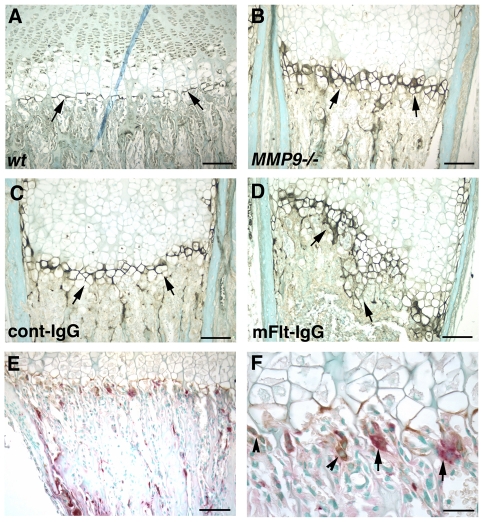Fig. 5.
MMP-9 deficiency and inhibition of VEGF alter the accumulation of cleaved collagen at the growth plate. (A–D) Immunostaining with an antibody against cleaved fragments of type II collagen on sections of metatarsals of 2-week-old WT (A) and MMP-9−/− (B) mice, and of sections of 1-week-old MMP-9−/− mice treated with cont-IgG (C) or mFlt(1–3)-IgG (D) for 1 week, showing the presence of cleaved collagen at a thin line along the cartilage-bone junction in WT mice (A, arrows), a larger zone of cleaved collagen in MMP-9−/− mice (B, arrows), and a larger zone with an irregular border in MMP-9−/− mice treated with mFlt(1–3)-IgG (D, arrows). (E,F) Immunostaining for MMP-9 and substrate staining for tartrate-resistant acidic phosphatase (TRAP) activity on the same tissue sections from WT growth plates showing MMP-9-positive cells that are both TRAP positive (F, arrows) and TRAP negative (F, arrowheads). Bars, 100 μm (A–E); 32 μm (F).

